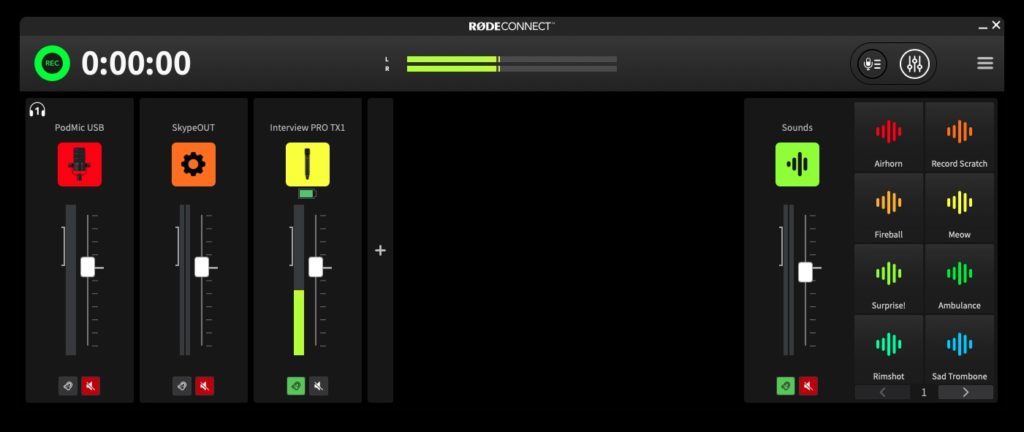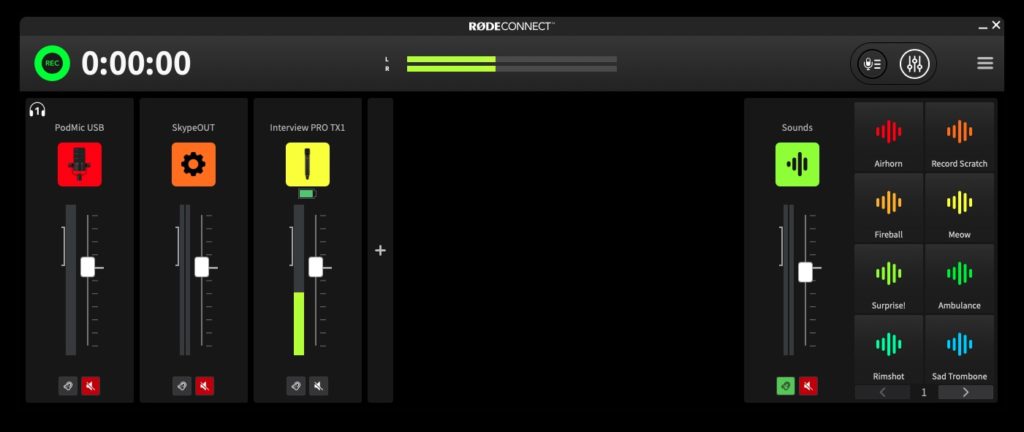Review: RØDE Interview PRO wireless microphone-recorder
Description
RØDE’s new Interview PRO microphone has sparked a lot of interest and controversy for many reasons. Of course, the Interview PRO is much more than a microphone and even more than a wireless microphone, since it’s also a standalone 32-bit float recorder (for use with or without a wireless receiver), so its potential applications extend even further, especially if we are willing to abandon certain old traditions or rules, which I will cover ahead. I’ll also share a video (recorded both in the studio and outdoors) and several audio recorded in a busy and noisy café.
First, let’s talk about the unreasonable criticisms the Interview PRO has received and then debunk them for most ENG (Electronic News Gathering) situations. Then we will talk about other applications, advantages and disadvantages, given the extraordinary quality and simplicity of the Interview PRO.
Criticism 1
«The Interview PRO has an omnidirectional capsule, not a cardioid or other directional pattern.»
For all those people who have made this unreasonable criticism, I must point out that the most popular electronic press microphones I have observed on TV news have always had an omnidirectional capsule. In my experience, this started with the ElectroVoice 635A (which was released in 1965) and its variants, followed by the ElectroVoice RE50 and its variants. Since I started publishing in ProVideo Coalition magazine in 2008, I have reviewed and compared several other ENG microphones, including (in alphabetical order) Audio Technica’s BP4002, RØDE’s Reporter, and Senal’s ENG-18RL, which derives its name from the Spanish word señal (which means «signal»). This is similar to what happened with the state of Montana which derives its name from the word montaña or «mountain»). In some cases, I made direct comparisons to ElectroVoice’s RE50. All of them have an omnidirectional pattern. There are reasons why the ENG industry has generally preferred the omnidirectional pattern for so many decades: Omnidirectional microphones are more forgiving when one of the two people in an interview interrupts the other unexpectedly, and (unlike directional microphones) and fortunately, there is no proximity effect with omnidirectional mics. As a result, even if one of the voices moves further away from the microphone, the pitch does not change, so only dynamic compression is required, without the need for continuous EQ as the microphone moves back and forth, as is often the case. Within the short outdoor section of the video below, you’ll hear and see an example of that.
<figure class="wp-block-embed is-type-video is-provider-youtube wp-block-embed-youtube wp-embed-aspect-16-9 wp-has-aspect-ratio">
<iframe loading="lazy" title="RØDE Interview PRO commentary for review" width="640" height="360" src="https://www.youtube.com/embed/CB17YupeMF8?feature=oembed" frameborder="0" allow="accelerometer; autoplay; clipboard-write; encrypted-media; gyroscope; picture-in-picture; web-share" referrerpolicy="strict-origin-when-cross-origin" allowfullscreen></iframe>
All sound recorded in the above video was recorded with the Interview PRO, with slight post processing, to compensate for ambient noise and reverb. This video also incorporates Descript’s technology called Eye Contact (reviewed here) which does an excellent job of simulating my eyes being pointed at the camera, although unfortunately it turns my natural blue eyes brown.
Criticism 2
«It’s a condenser microphone, not a dynamic microphone.»
This criticism is partly reasonable and partly unreasonable.
Although historically the most popular handheld ENG microphones used for impromptu interviews have been dynamic (not condenser), including all the examples I covered in the previous section, all shotgun microphones, and 99% of all lavalier microphones have been condenser type. It probably won’t be a good idea to use the RØDE Interview PRO microphone as a substitute for a hammer (as some dynamic microphones have been used). However, considering all the other amazing features included with the Interview Pro, we should really give it a chance, especially since we are now in the era of instant noise reduction during post-production (or even live noise reduction with some microphones and workflows that we’ll cover soon). We should treat our microphones as carefully as we treat our cameras and audio mixers.
Audio recordings
The following were recorded in a busy café with a lot of ambient noise.
<figure class="wp-block-audio"></figure>
CC Limardo (Carmen Cecilia Limardo) converses with me and records an advertising spot, without processing.
<figure class="wp-block-audio"></figure>
CC Limardo (Carmen Cecilia Limardo) converses with me and records an advertising spot, processed.
In addition, my voice on CapicúaFM’s episode 89 was recorded completely with the Interview PRO.
Can the Interview PRO be used as a studio microphone?
Surprisingly the answer is YES, but I would only consider it if it is going to be a single microphone in the same room or studio, and can be placed very close to the sound source. In fact, the entire video I shared above in this article was recorded using Interview PRO, with only moderate processing applied in post-production. This is mainly to reduce ambient noise and reflections.
What about latency (delay) during monitoring?
As I clarified in my article RØDECaster latency-free headphone monitoring? Yes, no and yes! From January 2024, it depends on each individual’s threshold. For example,
- Original RØDECaster Pro — 3 ms (too low to be perceived even by me, since I’m very sensitive)
- RØDECaster Pro II and Duo — 6 ms (tolerable for many, but too annoying for me)
- Mackie DLZ and DLZ XS — 5ms (Mackie was recently purchased by RØDE.)
In the particular case of the RØDE Interview PRO microphone that we are discussing today, I have the following to share with you:
- Compatible receivers fortunately work with the RØDE Connect program (as detailed in the above video).
- The RØDE Connect software mixer allows the Interview PRO to appear as a source through one of these compatible receivers.
- The latency is excessive for me since I am very sensitive, but it would probably be fine for those who don’t mind the latency of the RØDECaster Pro II and Duo.
<figure class="wp-block-image size-large">
 </figure>
</figure>This screenshot demonstrates that the Interview PRO can be listed as a source for the RØDE Connect mixer using any of the supported receivers (covered in the video). The green button indicates that this source is being included in local monitoring.
The bottom line depends on how sensitive you are to latency. If you are as sensitive as I am, you can disable the LISTEN button for that particular source after doing the initial check and simply monitor the other sources (if there are any).
<figure class="wp-block-image size-large">
 </figure>
</figure>This screenshot indicates that this source (the Interview PRO) is no longer included in local monitoring.
Since there are no other sources active in this video, I didn’t use headphones in the video, although I did use them during the initial setup.
What does this mean if you are going to use the Interview PRO for a pre-recorded audio-only interview, without video and without any wireless receiver?
Taking into account that the Interview PRO does not have any headphone output, it means that we must rely 100% on the red light of the record button as





